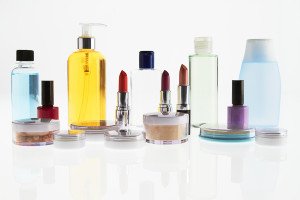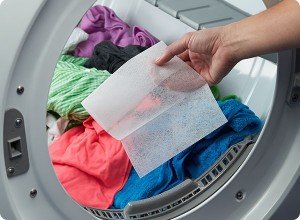Arsenic in Apple Juice: A New Report Suggests Widespread Exposure
5 min read
Common brands of apple juice and grape juice, which American children swig by the gallons, may have levels of arsenic that are high enough to increase the risk of chronic illnesses like cancer, diabetes and heart disease over time, according to a new Consumer Reports (CR) investigation.
In the test of 88 samples of 28 brands of apple juice and grape juice, investigators found that roughly 10% of samples (from five brands) had total arsenic levels exceeding 10 parts per billion (ppb) — the federal arsenic limit for bottled water. One in four samples also had levels of lead exceeding the bottled-water limit of 5 ppb.
The government has no standard for arsenic or lead in apple juice or grape juice, and the new findings have prompted Consumers Union, CR’s advocacy arm, to call on the Food and Drug Administration (FDA) to regulate the toxins in juice.
Last September, TV host and TIME contributor Dr. Mehmet Oz set off a media firestorm when he reported the results of his own study of apple juice, finding that some brands contained high enough levels of arsenic to make them unsafe to drink. At the time, the FDA called Oz’s report “irresponsible” because his testing measured only total arsenic levels. There are two kinds of arsenic in juices and other foods: organic, which is not generally thought to be dangerous, and inorganic, which is a known carcinogen that causes bladder, lung and skin cancer in people and can increase the risks of heart disease, immune problems and Type 2 diabetes.
The new CR study found that most of the arsenic found in apple and grape juices was inorganic. For the study, CR went shopping in New York, New Jersey and Connecticut to buy juice sold in ready-to-drink bottles, juice boxes and cans of concentrate. Researchers purchased samples from three different lots of most brands in order to account for variability.
Levels of arsenic in apple juice ranged from 1.1 ppb to 13.9 ppb; levels in grape juice were higher, ranging from 5.9 ppb to 24.7 ppb. Levels of lead topped out at 13.6 ppb in apple juice and 15.9 ppb in grape juice.
At least one sample of apple juice from the following popular brands had levels of arsenic over 10 ppb: Apple & Eve, Great Value (Walmart’s house label), and Mott’s; for grape juice, at least one sample from Walgreens and Welch’s exceeded that limit.
Apple juice brands that had at least one sample surpassing 5 ppb of lead were: America’s Choice (A&P), Gerber, Gold Emblem (CVS), Great Value, Joe’s Kids (Trader Joe’s), Minute Maid, Seneca and Walgreens. At least one grape juice sample from Gold Emblem, Walgreens and Welch’s contained more than 5 ppb of lead.
There were some winners on the list: samples of Nature’s Own 100% Apple Juice, Tropicana 100% Apple Juice and Red Jacket Orchards 100% Fuji Apple Juice Never From Concentrate contained low levels of both arsenic and lead. The full results of the study are available for download [PDF] on Consumer Reports’ website.
As CR noted, however:
Our findings provide a spot check of a number of local juice aisles, but they can’t be used to draw general conclusions about arsenic or lead levels in any particular brand. Even within a single tested brand, levels of arsenic and lead sometimes varied widely.
Arsenic is a naturally occurring element that can contaminate groundwater. It’s also still lingering in the environment from other now-banned sources like insecticides, industrial preservatives and poultry feed, and is produced as a byproduct of coal-fired power plants and smelters used to process copper or lead.
Researchers think contaminated soil is a likely source of the arsenic in apple juice, which helps explain why the toxin is found even in juices made from 100% organically grown apples. Interestingly, CR notes that many manufacturers now make their juice using apple-juice concentrate from various sources — including from China, Argentina, New Zealand, South Africa and Turkey. A more thorough study would have to look at arsenic and lead levels by country of origin.
As for the question of whether Americans drink enough apple or grape juice to see elevated arsenic levels or associated health effects, the CR study sought an answer by commissioning an analysis of 2003-08 data from the National Health and Nutrition Examination Survey, which tracked what people ate and measured arsenic levels in participants’ urine to gauge their exposure. CR reported:
The resulting analysis of almost 3,000 study participants found that those reporting apple-juice consumption had on average 19% greater levels of total urinary arsenic than those subjects who did not, and those who reported drinking grape juice had 20% higher levels. The results might understate the correlation between juice consumption and urinary arsenic levels because NHANES urinary data exclude children younger than 6, who tend to be big juice drinkers.
Is the exposure leading to health problems? “People sometimes say, ‘If arsenic exposure is so bad, why don’t you see more people sick or dying from it?’ But the many diseases likely to be increased by exposure even at relatively low levels are so common already that its effects are overlooked simply because no one has looked carefully for the connection,” Joshua Hamilton, a toxicologist specializing in arsenic research and the chief academic and scientific officer at the Marine Biological Laboratory in Woods Hole, Mass., told CR.
As CR also reported, chronic, low-level arsenic exposure can be mistaken for other ailments such as chronic fatigue syndrome. Other befuddling symptoms can include gastrointestinal problems and skin discoloration or lesions. Over time, of course, chronic exposure can lead to cancer and other diseases. Increasingly, the evidence shows that arsenic exposure may be especially dangerous during pregnancy, infancy and in early childhood.
“Based on Consumer Reports’ test findings, Consumers Union is urging the FDA to set a more protective standard of 3 ppb for total arsenic and 5 ppb for lead in juice,” wrote Consumer News’ Andrea Rock. “Such standards are attainable: 41 percent of the samples Consumer Reports tested would meet both thresholds.” Inorganic arsenic isn’t just in juice either. It’s also been found at high levels in chicken, rice and baby food.



